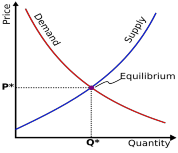The Visible Hand we need today – J.D. Alt
According to the “invisible hand” theory — long celebrated (in America) as the most effective mode of human economics — private commerce should now be busily directing our efforts and resources toward those things we truly need to prosper as a collective society. Instead, the “invisible hand” seems to be wilfully guiding us in the opposite direction. How can that be? Has some- thing fundamental shifted, causing the mechanism of the Great American Enterprise to steer not just blindly, but recklessly?
The answer appears to be YES. And what has shifted is that the secret formula of the “invisible hand”- the profit-motive – is no longer capable of ignoring, or hiding, the collateral damages (unpaid “costs”) that have floated from its wake for two centuries.
Or, to put it more accurately, while the profit-motive and the “invisible hand” continue to both hide and ignore those damages (most dangerously exemplified by carbon pollution) human society (which supposedly is the beneficiary of the “invisible hand”) can no longer allow it to happen.
To come to the point: the damages (which are now far beyond “collateral”) must, at last, be stopped and ameliorated — but the celebrated “invisible hand,” with its profit-motive guidance system, is incapable of accomplishing the task for the simple reason that doing so will be UNPROFITABLE.
If you remove its profit-motive guidance system, it turns out, the “invisible hand” doesn’t have a clue what needs to be done. As a result — and because the current U.S. political-power structure insists that only the “invisible hand” of market economics be allowed to oper- ate the tiller — the ship “Great American Enterprise” is now floating and bumping around without any rational direction to pursue other than increasing the wealth of the already wealthy.
Let’s take just one example: Something the world desperately needs is a fully operational zero-carbon transportation system — not fifty years from now, but ten years from now. Short of accomplishing that, we face the unfolding prospect of near certain (and potentially catastrophic) climate-change commencing in the next decade. What is the “invisible hand” doing to confront this issue? Its pinky finger is getting some “market-twitches” that tell Elon Musk and the major auto manufacturers that someday, in the future, there’s “money to be made” in electric vehicles. In the meanwhile, the rest of the invisible digits are busy auctioning off more and more leasing rights for oil and gas drilling — because that’s where the profits are today, because fossil-fueled cars, trucks, and buses are what will be making viable profits for the foreseeable future. It’s an unbreakable logic.
But modern society has, as of this very moment, run out of the time needed for the “invisible hand” to get to that “future” where the zero-carbon enterprise is profitable! Maybe that, really, is the fundamental change that’s happened: There’s just not enough time now to reach “profitability” — because the moving train of climate change is no longer an abstract notation on some future schedule, it’s a whistle-blowing reality just on the other side of the hill.
Something has to be done. But what?
Interestingly, the only one moving any- where close to fast enough — and decisively enough — seems to be the Chinese Communist Party. Gerry Shih, of the Washington Post, reports that while the Washington, D.C. Metro recently unveiled (with much fanfare) fourteen electric buses — making it one of the largest electric-fleet operators in the U.S. — the Chinese metropolis of Shenzhen has already deployed more than 16,000 electric buses and 12,000 electric taxis, making it the first carbon- free public transport system in the modern world. How did it accomplish this seemingly impossible transformation? ANSWER: It used the VISIBLE hand of intentionally targeted state spending to undertake the accomplishment of an agreed upon goal — whether it made profits or not.
In other words, according to the Trump administration and the “invisible hand” idealists, China cheated. “Government” is not supposed to decide what needs to be done—and is certainly not supposed to create money to pay for doing it. That is not playing fair. That’s foul-play. That’s illegal! Adam Smith said something about that a long time ago — and any one of our mainstream economists can write gleeful gibberish in the Wall Street Journal explaining why the “invisible hand” continues to be the only way to avoid catastrophe.
Ho-hum, answers China: We have a major city with a fully operational zero- carbon public transport system. So far as we’re concerned, that’s all that matters. The fact that, in getting there, we also created from scratch an electric vehicle manufacturing capability that will enable us, starting right now, to export zero-carbon transport systems all around the world – we are not complaining about that either. So far as creating money is concerned, what’s the difference between you creating money to build things that make profits, and us creating money to build things that we decided we need to have?
Personally, I think if Adam Smith were alive today, he’d say something like this: “The invisible hand works great so long as it’s getting great results — but when it starts making big mistakes that threaten the well-being of all nations, it’s time to hand the steering wheel to a visible hand that can see – and directly steer toward — what needs to be done.”
Source: New Economic Perspectives http://neweconomicperspectives.org/2019/06/the-visible-hand-we-need-today.html

Economic orthodoxy believes an Invisible Hand leads markets to an optimum equilibrium.





























